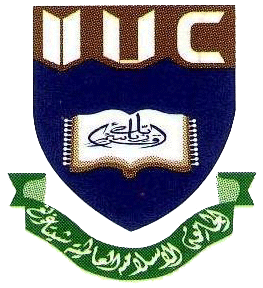CMOS Analog Circuit Design
Material type: TextLanguage: Series: The Oxford series in electrical and computer engineeringPublication details: New York : Oxford University Press, USA, c2012.Edition: 3rd edDescription: xv, 590 p. : ; 24 cmISBN:
TextLanguage: Series: The Oxford series in electrical and computer engineeringPublication details: New York : Oxford University Press, USA, c2012.Edition: 3rd edDescription: xv, 590 p. : ; 24 cmISBN: - 9780198097389
- 621.3815 A425c 2012
 Books
Books
| Item type | Current library | Collection | Call number | Status | Date due | Barcode | |
|---|---|---|---|---|---|---|---|
 Books
Books
|
IIUC Central Library Reference | Reference | 621.3815 A425c 2012 (Browse shelf(Opens below)) | Not for loan | 89403 |
Includes index.
Machine generated contents note: -- Chapter 1 - Introduction and Background -- 1.1 Analog Integrated Circuit Design -- 1.2 Notation, Symbology and Terminology -- 1.3 Analog Signal Processing -- 1.4 Example of Analog VLSI Mixed-Signal Circuit Design -- Chapter 2 - CMOS Technology -- 2.1 Basic MOS Semiconductor Fabrication Processes -- 2.2 The PN Junction -- 2.3 The MOS Transistor -- 2.4 Passive Components -- 2.5 Other Considerations of CMOS Technology -- Chapter 3 - CMOS Device Modeling -- 3.1 Simple MOS Large-Signal Model (SPICE LEVEL 1) -- 3.2 Other MOS Large-Signal Model Parameters -- 3.3 Small-Signal Model for the MOS Transistor -- 3.4 Computer Simulation Models -- 3.5 Subthreshold MOS Model -- 3.6 SPICE Simulation of MOS Circuits -- Chapter 4 - Analog CMOS Subcircuits -- 4.1 MOS Switch -- 4.2 MOS Diode/Active Resistor -- 4.3 Current Sinks and Sources -- 4.4 Current Mirrors -- 4.5 Current and Voltage References -- 4.6 Bandgap Reference -- Chapter 5 - CMOS Single Stage Amplifiers -- 5.1 Inverters -- 5.2 Differential Amplifiers -- 5.3 Cascode Amplifiers -- 5.4* Current Amplifiers -- 5.5* Output Amplifiers/Buffers -- Chapter 6 - Simple Operational Amplifiers* -- 6.1 Design of CMOS Op Amps -- 6.2 Compensation of Op Amp -- 6.3 Design of Two-Stage Op Amps -- 6.4 Power-Supply Rejection Ratio of Two-Stage Op Amps -- 6.5 Cascode Op Amps -- 6.6 Simulation and Measurement of Op Amps -- 6.7 Macromodels for Op Amps -- Chapter 7 - Complex Operational Amplifiers* -- 7.1 Buffered Op Amps -- 7.2 High-Speed/Frequency Op Amps -- 7.3 Differential-Output Op Amps -- 7.4 Micropower Op Amps -- 7.5 Low Noise Op Amps -- 7.6 Low Voltage Op Amps -- Chapter 8 - Comparators -- 8.1 Characterization of a Comparator -- 8.2 Two-Stage, Open-Loop Comparator Design -- 8.3 Other Open-Loop Comparators -- 8.4 Improving the Performance of Open-Loop Comparators -- 8.5 Discrete-Time Comparators -- 8.6 High-Speed Comparators -- Chapter 9 - Digital-Analog and Analog-Digital Converters -- 9.1 Introduction and Characterization of Digital-Analog Converters -- 9.2 Current, Voltage and Charge Scaling Digital-Analog Converters -- 9.3 Extending the Resolution of Parallel Digital-Analog Converters -- 9.4 Serial Digital-Analog Converters -- 9.5 Introduction and Characterization of Analog-Digital Converters -- 9.6 Serial Analog-Digital Converters -- 9.7 Medium Speed Analog-Digital Converters -- 9.8 High Speed Analog-Digital Converters -- 9.9 Oversampling Converters -- Appendix A Circuit Analysis for Analog Circuit Design -- Appendix B Integrated Circuit Layout -- Appendix C CMOS Device Characterization -- Appendix D Time and Frequency Domain Relationship for Second-Order Systems -- Appendix E Switched Capacitor Circuits.
"Respected authors Phil Allen and Doug Holberg bring you the third edition of their popular textbook, CMOS Analog Circuit Design. Working from the forefront of CMOS technology, Phil and Doug have combined their expertise as engineers and academics to present a cutting-edge and effective overview of the principles and techniques for designing circuits. Their two main goals are: * to mix the academic and practical viewpoints in a treatment that is neither superficial nor overly detailed * to teach analog integrated circuit design with a hierarchically organized approach Most of the circuits, techniques, and principles presented in CMOS Analog Circuit Design come directly from the authors' industrial experience, making the book a valuable resource for both practicing engineers and students taking courses in analog electronics or CMOS analog design. The trademark approach of Phil and Doug's textbook is its design recipes, which take readers step-by-step through the creation of real circuits, explaining and demystifying complex design problems. The book provides detailed coverage of often-neglected areas and deliberately leaves out bipolar analog circuits, since CMOS is the dominant technology for analog integrated circuit design. Appropriate for advanced undergraduates and graduate students with background knowledge in basic electronics--including biasing, modeling, circuit, analysis, and frequency response--CMOS Analog Circuit Design, Third Edition, presents a complete picture of design (including modeling, simulation, and testing) and enables readers to undertake the design of an analog circuit that can be implemented by CMOS technology. New to This Edition * An updated Chapter 2 that reflects the latest technology on twin-well shallow-trench-isolation CMOS * Expanded coverage of such topics as frequency response, feedback, distortion, noise, bootstrapped voltage references, and photosensitivity * A new appendix on layout techniques"--
"A textbook for 4th year undergraduate/first year graduate electrical engineering students"--
Imran Hasan Ramjan
There are no comments on this title.

